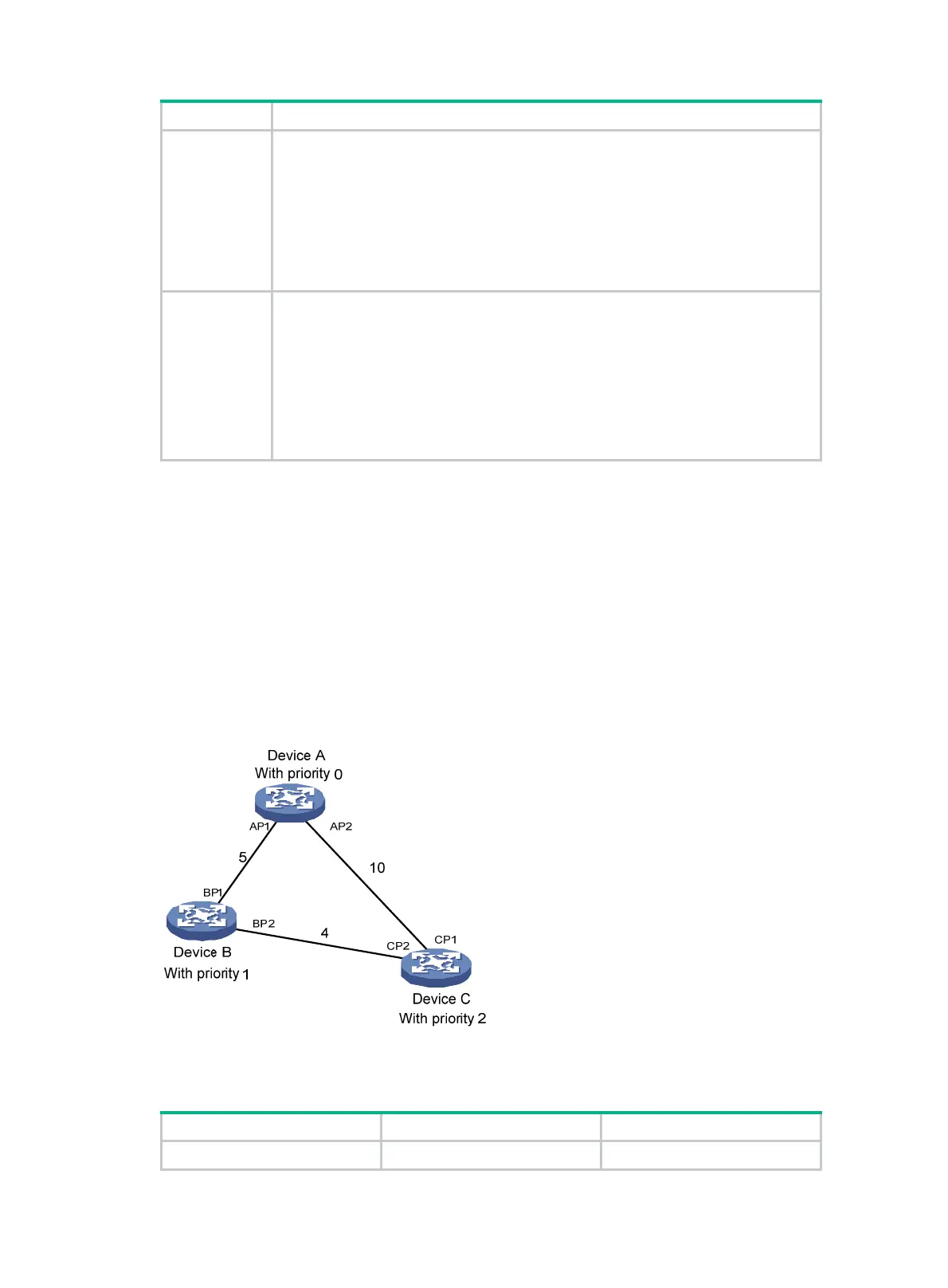289
Step Description
2
Based on the configuration BPDU and the path cost of the root port, the device
calculates a designated port configuration BPDU for each of the rest ports.
• The root bridge ID is replaced with that of the configuration BPDU of the root
port.
• The root path cost is replaced with that of the configuration BPDU of the root
port plus the path cost of the root port.
• The designated bridge ID is replaced with the ID of this device.
• The designated port ID is replaced with the ID of this port.
3
The device compares the calculated configuration BPDU with the configuration
BPDU on the port of which the port role is to be defined, and acts depending on the
comparison result:
• If the calculated configuration BPDU is superior, the device considers this port
as the designated port, and replaces the configuration BPDU on the port with
the calculated configuration BPDU, which will be sent out periodically.
• If the configuration BPDU on the port is superior, the device blocks this port
without updating its configuration BPDU. The blocked port can receive BPDUs
but cannot send BPDUs or forward data.
When the network topology is stable, only the root port and designated ports forward traffic, and
other ports are all in the blocked state—they receive BPDUs but do not forward BPDUs or user
traffic.
A tree-shape topology forms upon successful election of the root bridge, the root port on each
non-root bridge and the designated ports.
An example of the STP algorithm calculation
The following example shows how the STP algorithm works. As shown in Figure 313, the priority of
Device A is 0, the priority of Device B is 1, the priority of Device C is 2, and the path costs of these
links are 5, 10, and 4, respectively.
The spanning tree calculation process in this example is only a simplified process.
Figure 313 The STP algorithm
1. State initialization of each device.
Table 139 Initial state of each device
Device Port name BPDU of port
Device A AP1 {0, 0, 0, AP1}
